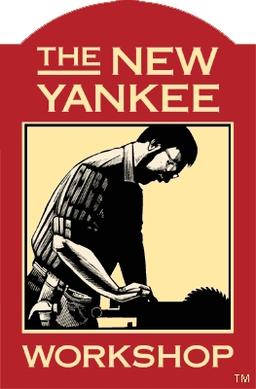I’ve been doing basic woodworking for a while, and I want to start moving into furniture (mostly for my own enjoyment). I strongly prefer the aesthetics of craftsman/mission/prairie style (Gustav Stickley, et al.) I’m trying to make a list of the basic power tools that would be necessary/useful for that style of furniture, along with hand tools, and I’d appreciate feedback from people with more experience than I.
I already have a very basic work bench; I think that I probably need to make a work bench that I can use bench dogs on; a roubo workbench be ideal. I also definitely need to make an infeed and outfeed table for my table saw so I can work with plywood sheet more easily.
(I have a number of these, but not everything.)
Table saw (ideally a cabinet saw)
-miter gauge
-dado blade
-tenoning jig
Miter saw
Band saw (ideally 2; one that could do re-saw work, and a smaller one for cutting curves)
Jointer (ideally long bed)
Planer
Router
-tongue and groove set
Drill press (?)
Mortising machine
Random orbit sander
Finish sander
Dust collection
Dovetail jig set (for drawers)
Doweling jig (?)
Hand planes (kind of a long list here…)
Chisels
-mortising chisels
-paring chisels
-flushing chisels
Card scraper
Marking tools
-Scribe
-marking knife
Combination square
Tape measure
Calipers w/ depth gauge
Clamps
-Parallel clamps
-pipe clamps, etc.
Is there anything that I’m missing that I should be thinking about? (Quick edit - I don’t have a lathe on here because I have zero interest in turning anything. I don’t think that things like a belt or spindle sander, or a shaper, would really do much of anything for the style I prefer. A router table might be useful though.)


Craftsman/ mission style began as simple furniture built by people with limited tools. Luckily this means you also don’t need many tools to do it well. You will be doing a lot of parallel cuts, right angles, and through or pinned mortise & tenon joints.
100% agree with SkyNTP that on the power tool end you will primarily use the table saw, router, planer. I would add a good set of squares, marking gauge, a good 1/2 in or 1/4 in paring chisel for cleaning up corners after routing, and a doweling jig if you think you will be going for pinned mortise and tenons.
Save the rest of that cash for all the QS white oak you will need.
I have the table saw and router, I need to get a planer for sure. I’m currently looking for a used DeWalt 735/735x ($400 or so seems to be the mid-range price), and planning on replacing the HSS knives with a Shellix head. I have several combination squares, and a few carpenter squares; I’ll need at least one precision square. I hadn’t really thought of doing pinned tenons; a quick search seems to indicate that it’s mostly cosmetic at this point (e.g., Titebond 3 holds much better than hide glues). But I’ll add that to the list of maybes.
And yeah, lumber is def. going to be one of the expensive parts. While QS white oak is more traditional, I like the appearance of the wormy red oak that one of the yards near me stocks; there’s a nice contrasting appearance when you fill the worm holes.
Sorry I said pinned m & t, but what I meant was more specifically a drawbore m & t which is a type of pinned tenon. The pin is slightly tapered and offset from the hole drilled in the tenon and will actually pull the tenon tightly into the mortise. Think of it as a more visually streamlined tusk tenon (which is also pretty common in this style). They are a very easy way to make a nice tight joint without needing extreme accuracy or glue.
Don’t know what your living situation is, but if you think the legs or stretchers on your furniture are likely to get damaged at some point and need replacement or you want the option of partial disassembly, strategically used drawbore or tusked unglued joints can make these tasks much simpler.
Ah, got it.
I’ll have to look at some historical plans to see how some things were done before I can make that decision; while I can piece out how most of the designs would have been made by Stickley, et al., I’m not positive on everything.